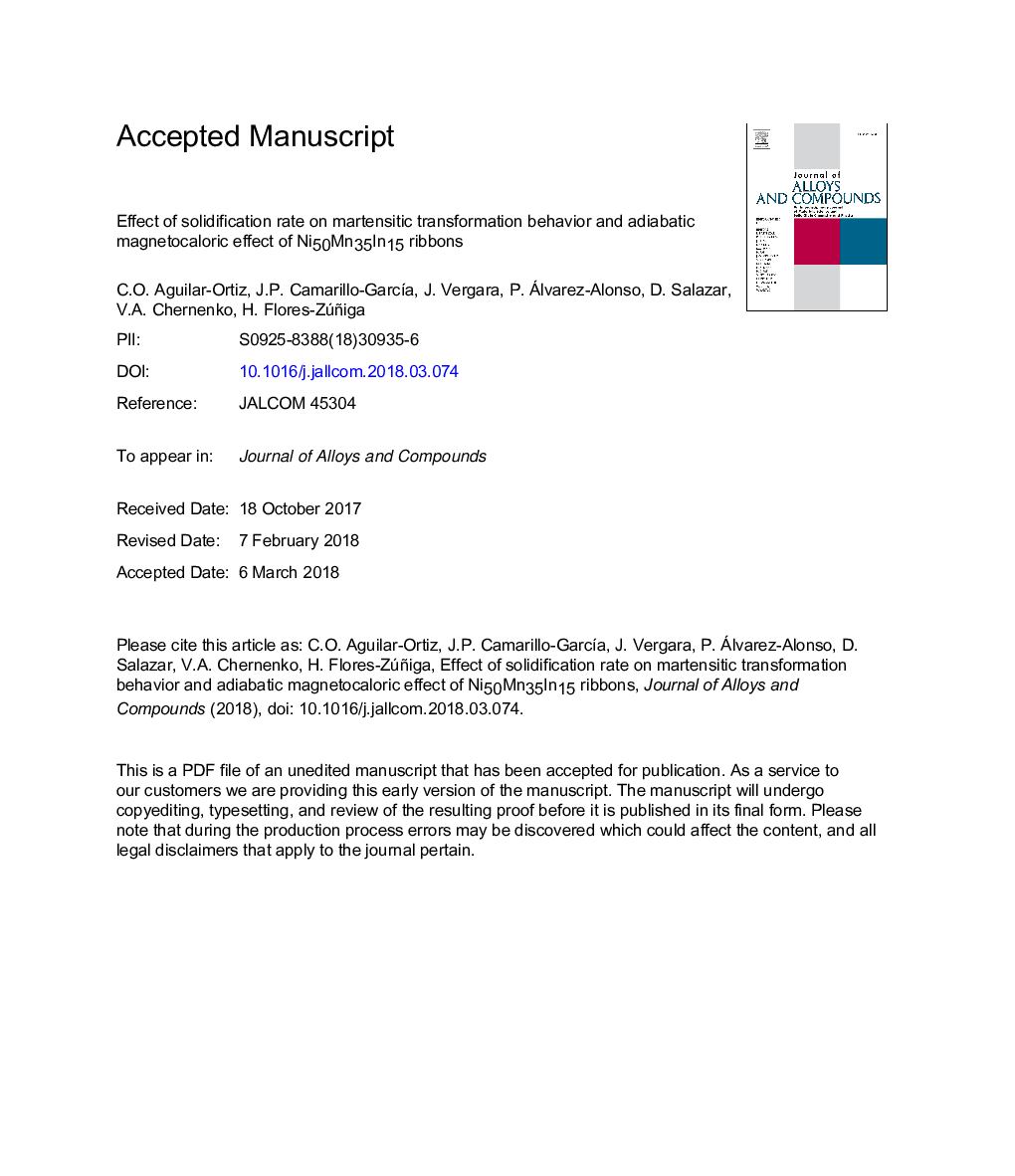| Article ID | Journal | Published Year | Pages | File Type |
|---|---|---|---|---|
| 7992389 | Journal of Alloys and Compounds | 2018 | 36 Pages |
Abstract
Ni50Mn35In15 compound has become an archetype for investigating the functional properties of metamagnetic shape memory alloys. We have fabricated Ni50Mn35In15 melt spun ribbons to study the crystal structure, microstructure, martensitic transformation, magnetic properties and magnetocaloric effect as a function of the ribbon solidification rate controlled by the wheel speed. We have found that an increase of the cooling rate refines the alloy grain size, which, in turn, influences the chemical order of austenite phase and functional properties: ribbons produced at low wheel speed (10, 20 and 30â¯m/s) present majorly L21 structure associated with higher magnetic entropy change, ÎSM (up to 18.6â¯J/kgK for a magnetic field change of μ0ÎHâ¯=â¯5â¯T) and Curie temperatures of austenite, TCA, and martensite, TCM (TCAâ¯=â¯309â¯K and TCM = 199â¯K) compared with the B2-ordered single phase ribbons (ÎSMâ¯=â¯11.3â¯J/kgK for μ0ÎHâ¯=â¯5â¯T; TCA = 293â¯K; TCMâ¯=â¯178â¯K) obtained at higher cooling rates (40 and 50â¯m/s). Besides, we have also observed a correlation between the grain size reduction and a shift of the martensitic transformation to lower temperatures. Direct measurements of the adiabatic temperature change have been performed during both the first- and second-order phase transitions. The results disclose the correlation between structural and magnetic properties of the ribbon and the wheel speed, which opens an innovative tool to adjust the transformation characteristics and magnetocaloric properties through the solidification rate control.
Keywords
Related Topics
Physical Sciences and Engineering
Materials Science
Metals and Alloys
Authors
C.O. Aguilar-Ortiz, J.P. Camarillo-GarcÃa, J. Vergara, P. Álvarez-Alonso, D. Salazar, V.A. Chernenko, H. Flores-Zúñiga,
